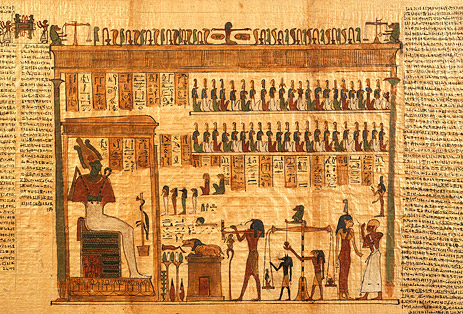Image Resource Bank
Image Gallery |  9 of 14
9 of 14 
Book of the Dead
This papyrus depicts the weighing of the heart, the 125th chapter of a Book of the Dead that belonged to a man named Neysu-shu-tefnut. According to Egyptian funerary beliefs, the heart of the deceased was weighed before a tribunal of the gods to verify his or her moral goodness. If the deceased passed the judgment, he or she would be reborn in the afterlife. The papyrus uses both hieroglyphs and a cursive script known as hieratic. Since drawing detailed Egyptian hieroglyphs was time consuming, a cursive script called hieratic was used for everyday correspondence and record keeping. Hieratic was used from about 3100 BCE into the Roman period. The hieroglyphs on the papyrus are used as captions for the representations, something that is common on Egyptian reliefs. The longer text, which is not associated with the vignette, employs the hieratic script. The name of the deceased is included in the hieratic inscription, but not in the hieroglyphs, suggesting that the papyrus may have been purchased with the vignette already painted. A different scribe working for Neysu-shu-tefnut would have added the hieratic later. There are also corrections in the hieratic, suggesting that the second scribe carefully checked his work.
Name: Book of the Dead
Material: Papyrus and Pigment
Size:
Height: 37.46 cm (1 ft 2.75 in)
Length: 9.14 m (30 ft)
Date: Fourth century BCE, Ptolemaic Period, Late Period, Dynasty 31
Place of Origin: Unknown
Location: Oriental Institute Museum, Chicago, Illinois
Source and Registration#: Oriental Institute Museum 9787

 Christopher Woods
Christopher Woods
Associate Professor of Sumerology, University of Chicago




